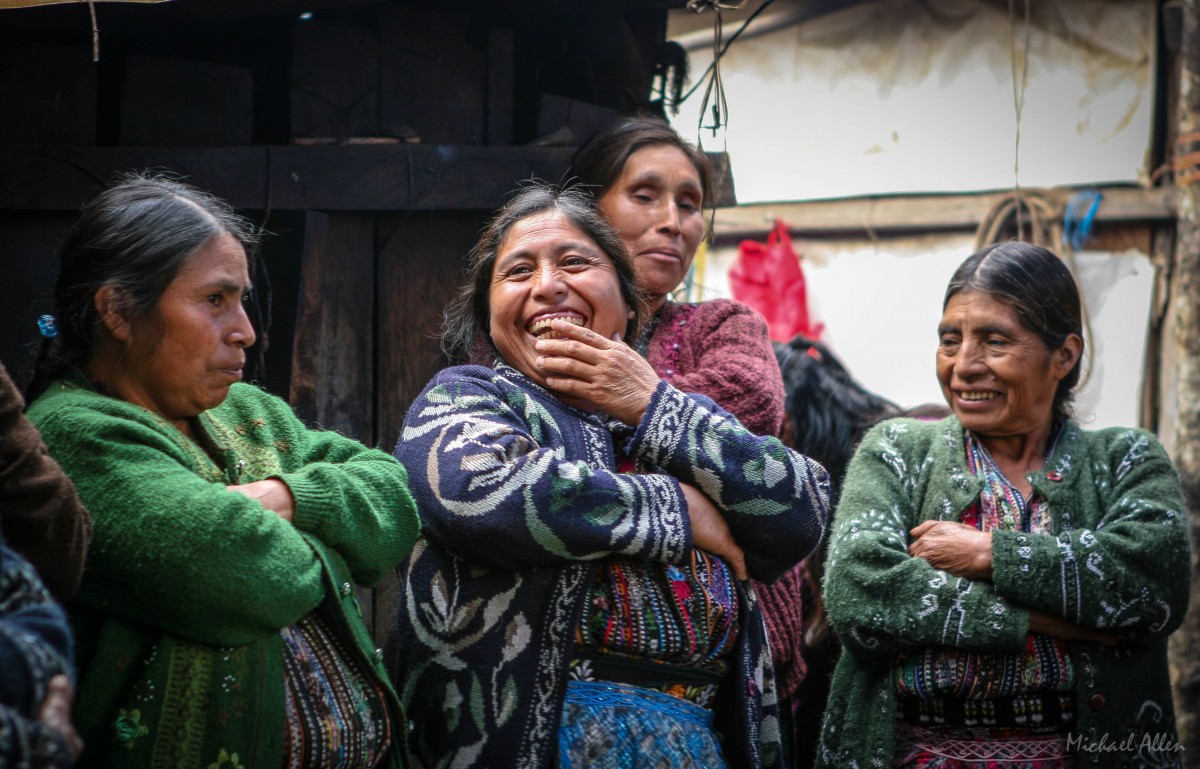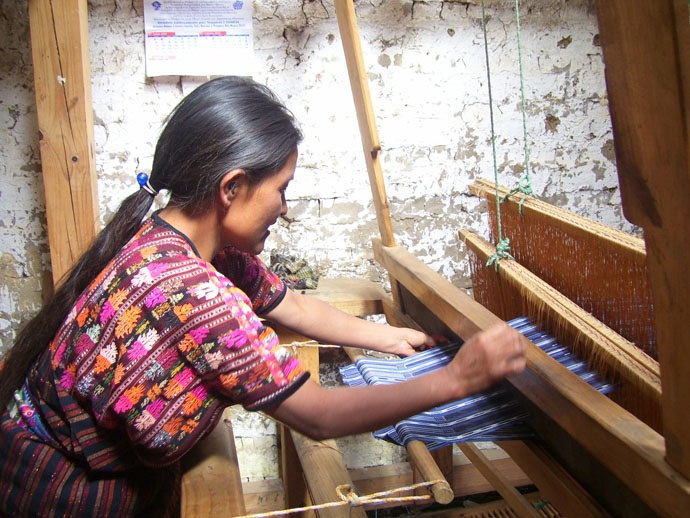
How poverty data influences strategy at Friendship Bridge >
By Tori Barnett & Caitlin Scott, Friendship Bridge
Friendship Bridge is a nonprofit organization that provides microcredit and education to Guatemalan women so they can create their own solutions to poverty. We work primarily with indigenous populations in rural areas where the rate of poverty and malnutrition in Guatemala is the highest. For many years, Friendship Bridge has been utilizing both qualitative and quantitative evaluation tools to monitor the impact of the mission. In 2011, Friendship Bridge committed to a more consistent evaluation process to better monitor balanced financial and social performance, which included conducting a baseline study using the Progress out of Poverty Index (PPI). The following year, Friendship Bridge institutionalized the PPI as part of its regular processes. The data collected from these efforts are now used to shape the strategic plans and priorities for the organization.
 Friendship Bridge's theory of change rests on three major principles: business development, poverty alleviation, and empowerment. These principles are extremely important in developing countries where women struggle each day to ensure there is food and shelter for their families. It means a more consistent cash flow and protection against shocks such as unexpected illnesses or natural disasters that destroy homes and businesses. It allows clients to consider their future instead of struggling to meet day-to-day basic needs.
Friendship Bridge's theory of change rests on three major principles: business development, poverty alleviation, and empowerment. These principles are extremely important in developing countries where women struggle each day to ensure there is food and shelter for their families. It means a more consistent cash flow and protection against shocks such as unexpected illnesses or natural disasters that destroy homes and businesses. It allows clients to consider their future instead of struggling to meet day-to-day basic needs.
The data obtained through the PPI validates existing program strategy to deliver microcredit and education to our target market. In addition, the data is guiding the 2014-2016 Strategic Plan to expand programs that offer diversified financial products and advanced educational services. The three major datapoints driving strategy are:
- Clear association between a client's loan cycle and their poverty level - suggesting the burden of poverty decreases the longer a woman is a client of Friendship Bridge
- Number of people a client employs and their use of business tools (e.g. budgets and ledgers) is correlated to poverty level - as clients implement the tools introduced by Friendship Bridge and hire employees, they develop as businesswomen and are on a path to advance out of poverty
- Business sectors are associated with poverty levels - Clients that focus in agriculture and artisan trades show the highest levels of poverty and greatest need of specialized programs through Friendship Bridge
 The association between client's loan cycle and their poverty level drove changes to focus on clients' needs and develop new programs that allow the organization to keep clients in the program longer. In our 2014-2016 Strategic Plan, Friendship Bridge is expanding services with diversified credit and savings programs, implementing initiatives that improve the quality of life for clients like health services, and transitioning loan officers to relationship managers that can support clients as they grow.
The association between client's loan cycle and their poverty level drove changes to focus on clients' needs and develop new programs that allow the organization to keep clients in the program longer. In our 2014-2016 Strategic Plan, Friendship Bridge is expanding services with diversified credit and savings programs, implementing initiatives that improve the quality of life for clients like health services, and transitioning loan officers to relationship managers that can support clients as they grow.
The correlation of number of employees and use of business development tools validates Friendship Bridge's Client Continuum strategy. This strategy offers the most relevant programs to clients at whatever their level of development. This means expanding client education, including reinforcing the use of business tools in the core curriculum, the implementation of a mentor program and additional enhancements to the advanced technical training program initiated in 2012.
48% of Friendship Bridge clients earn their income in agriculture and artisan trades, which are associated with higher incidence of poverty. Over the next three years, Friendship Bridge will develop a comprehensive agriculture program for rural smallholder farmers with appropriate credit and education programs. Artisan clients will also benefit from similar loan programs and better access to sustainable markets.
The PPI has become an essential tool in the monitoring and evaluation system at Friendship Bridge. Not only is the information used to guide organizational strategy, but the comprehensive system is used to carefully track social performance and alert staff to future program changes and enhancements. Ultimately, this allows Friendship Bridge to provide the right products and services to keep clients advancing along the Continuum to affect change on a community scale.
To learn more about Friendship Bridge, visit www.FriendshipBridge.org.
Caitlin Scott is the Program & Projects Manager for Friendship Bridge and is responsible for Social Performance Management, Monitoring & Evaluation, and donor reporting. She has witnessed the positive impact that microfinance can have and is passionate about collecting information to continuously improve outcomes for clients and prove results.
Tori Barnett is the Marketing & Communications Manager for Friendship Bridge and is the online voice for Friendship Bridge clients. She is responsible for telling the stories around Friendship programs and clients and is proud to deliver the news of their successes.
Top photo by Michael Allen
Bottom photo courtesy of Friendship Bridge



Comments